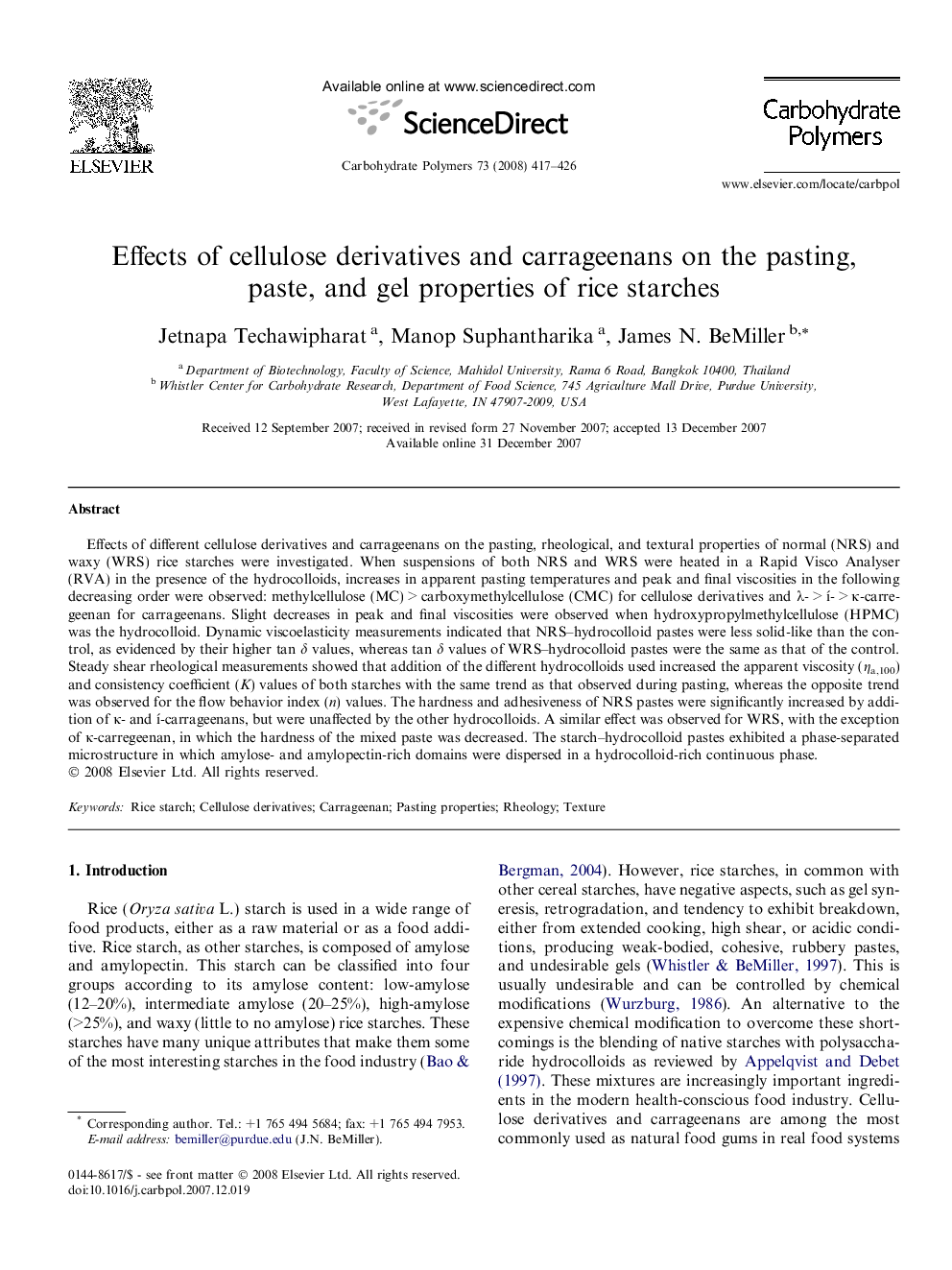| Article ID | Journal | Published Year | Pages | File Type |
|---|---|---|---|---|
| 1379350 | Carbohydrate Polymers | 2008 | 10 Pages |
Effects of different cellulose derivatives and carrageenans on the pasting, rheological, and textural properties of normal (NRS) and waxy (WRS) rice starches were investigated. When suspensions of both NRS and WRS were heated in a Rapid Visco Analyser (RVA) in the presence of the hydrocolloids, increases in apparent pasting temperatures and peak and final viscosities in the following decreasing order were observed: methylcellulose (MC) > carboxymethylcellulose (CMC) for cellulose derivatives and λ- > í- > κ-carregeenan for carrageenans. Slight decreases in peak and final viscosities were observed when hydroxypropylmethylcellulose (HPMC) was the hydrocolloid. Dynamic viscoelasticity measurements indicated that NRS–hydrocolloid pastes were less solid-like than the control, as evidenced by their higher tan δ values, whereas tan δ values of WRS–hydrocolloid pastes were the same as that of the control. Steady shear rheological measurements showed that addition of the different hydrocolloids used increased the apparent viscosity (ηa,100) and consistency coefficient (K) values of both starches with the same trend as that observed during pasting, whereas the opposite trend was observed for the flow behavior index (n) values. The hardness and adhesiveness of NRS pastes were significantly increased by addition of κ- and í-carrageenans, but were unaffected by the other hydrocolloids. A similar effect was observed for WRS, with the exception of κ-carregeenan, in which the hardness of the mixed paste was decreased. The starch–hydrocolloid pastes exhibited a phase-separated microstructure in which amylose- and amylopectin-rich domains were dispersed in a hydrocolloid-rich continuous phase.
